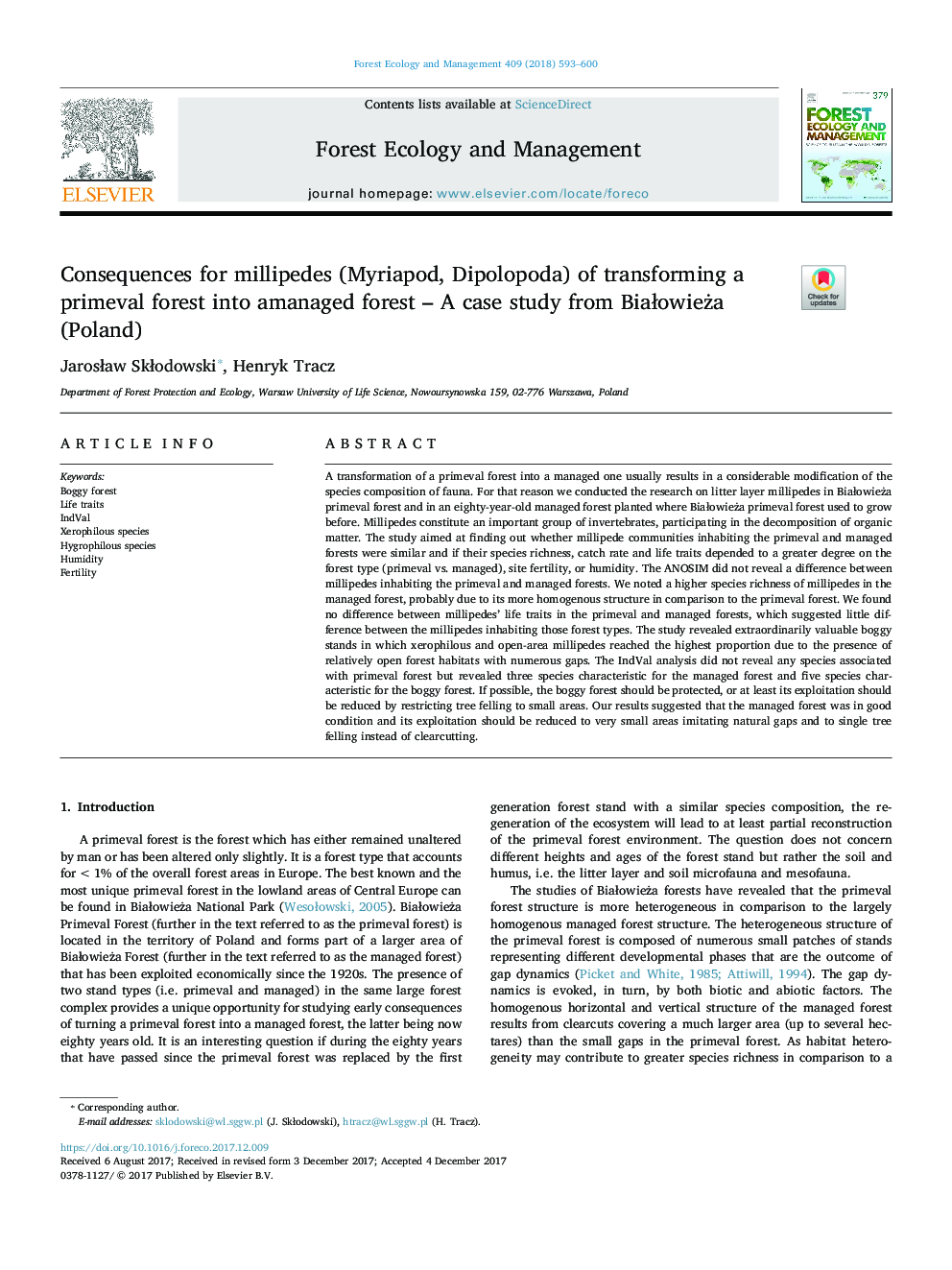| کد مقاله | کد نشریه | سال انتشار | مقاله انگلیسی | نسخه تمام متن |
|---|---|---|---|---|
| 6541948 | 1421349 | 2018 | 8 صفحه PDF | دانلود رایگان |
عنوان انگلیسی مقاله ISI
Consequences for millipedes (Myriapod, Dipolopoda) of transforming a primeval forest into amanaged forest - A case study from BiaÅowieża (Poland)
دانلود مقاله + سفارش ترجمه
دانلود مقاله ISI انگلیسی
رایگان برای ایرانیان
کلمات کلیدی
موضوعات مرتبط
علوم زیستی و بیوفناوری
علوم کشاورزی و بیولوژیک
بوم شناسی، تکامل، رفتار و سامانه شناسی
پیش نمایش صفحه اول مقاله

چکیده انگلیسی
A transformation of a primeval forest into a managed one usually results in a considerable modification of the species composition of fauna. For that reason we conducted the research on litter layer millipedes in BiaÅowieża primeval forest and in an eighty-year-old managed forest planted where BiaÅowieża primeval forest used to grow before. Millipedes constitute an important group of invertebrates, participating in the decomposition of organic matter. The study aimed at finding out whether millipede communities inhabiting the primeval and managed forests were similar and if their species richness, catch rate and life traits depended to a greater degree on the forest type (primeval vs. managed), site fertility, or humidity. The ANOSIM did not reveal a difference between millipedes inhabiting the primeval and managed forests. We noted a higher species richness of millipedes in the managed forest, probably due to its more homogenous structure in comparison to the primeval forest. We found no difference between millipedes' life traits in the primeval and managed forests, which suggested little difference between the millipedes inhabiting those forest types. The study revealed extraordinarily valuable boggy stands in which xerophilous and open-area millipedes reached the highest proportion due to the presence of relatively open forest habitats with numerous gaps. The IndVal analysis did not reveal any species associated with primeval forest but revealed three species characteristic for the managed forest and five species characteristic for the boggy forest. If possible, the boggy forest should be protected, or at least its exploitation should be reduced by restricting tree felling to small areas. Our results suggested that the managed forest was in good condition and its exploitation should be reduced to very small areas imitating natural gaps and to single tree felling instead of clearcutting.
ناشر
Database: Elsevier - ScienceDirect (ساینس دایرکت)
Journal: Forest Ecology and Management - Volume 409, 1 February 2018, Pages 593-600
Journal: Forest Ecology and Management - Volume 409, 1 February 2018, Pages 593-600
نویسندگان
JarosÅaw SkÅodowski, Henryk Tracz,